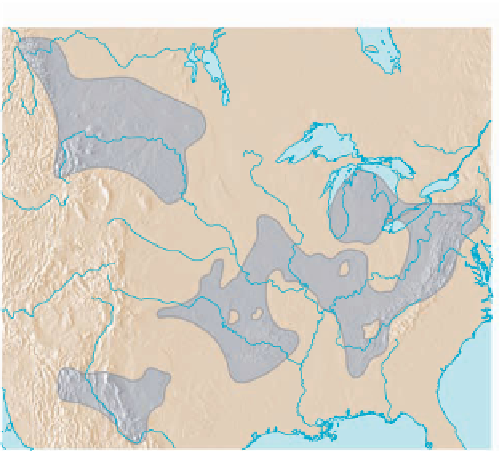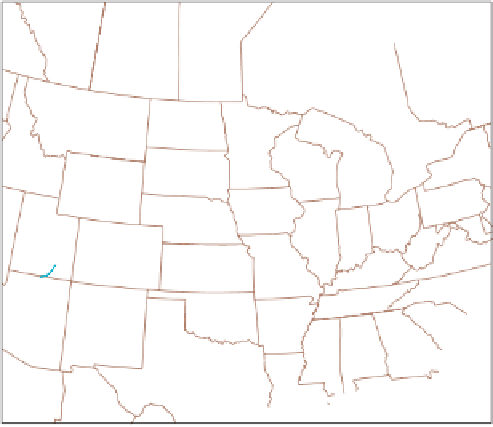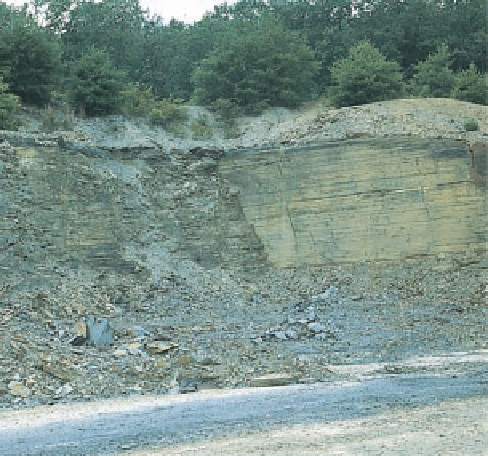Geology Reference
In-Depth Information
Recall that cratons are stable areas, and what deformation
they do experience is usually mild. The Pennsylvanian Period,
however, was a time of unusually severe cratonic deforma-
tion, resulting in uplifts of suffi cient magnitude to expose
Precambrian basement rocks. In addition to newly formed
highlands and basins, many previously formed arches and
domes, such as the Cincinnati Arch, Nashville Dome, and
Ozark Dome, were also reactivated (Figure 20.1).
During the Late Absaroka (Pennsylvanian), the area
of greatest deformation was in the southwestern part
of the North American craton, where a series of fault-
bounded uplifted blocks formed the
Ancestral Rockies
(
Northwest
Territories
Shallow
basinal
limestones
Canadian
Shield
Yukon
Fore
reef
Figure 20.19a). These mountain ranges had diverse geo-
logic histories and were not all elevated at the same time.
Uplift of these mountains, some of which were elevated
more than 2 km along near-vertical faults, resulted in ero-
sion of overlying Paleozoic sediments and exposure of the
Precambrian igneous and metamorphic basement rocks
(Figure 20.19b). As the mountains eroded, tremendous
quantities of coarse, red arkosic sand and conglomerate were
deposited in the surrounding basins. These sediments are
preserved in many areas, including the rocks of the Garden
of the Gods near Colorado Springs (Figure 20.19c) and at
the Red Rocks Amphitheatre near Morrison, Colorado.
Intracratonic mountain ranges are unusual, and their
cause has long been debated. It is currently thought that the
collision of Gondwana with Laurasia along the Ouachita
mobile belt (Figure 20.4a) generated great stresses in the
southwestern region of the North American craton. These
crustal stresses were relieved by faulting. Movement along
these faults produced uplifted cratonic blocks and down-
warped adjacent basins, forming a series of ranges and basins.
◗
Back reef,
platform
evaporites
Alberta
British
Columbia
◗
Figure 20.14
Devonian Reef Complex of Western Canada
Reconstruction of the extensive Devonian reef complex of western
Canada. These extensive reefs controlled the regional facies of the
Devonian epeiric seas.
continental glaciers. When the Gondwanan ice sheets
advanced, sea level dropped; when they melted, sea level rose.
Late Paleozoic cyclothem activity on all of the cratons closely
corresponds to Gondwanan glacial-interglacial cycles.
◗
Figure 20.15
Upper Devonian-Lower Mississippian Black Shales
a
The extent of the Upper Devonian to Lower Mississippian
Chattanooga Shale and its equivalent units (such as the Antrim
Shale and New Albany Shale) in North America.
b
Upper Devonian New Albany Shale, Button Mold Knob Quarry,
Kentucky.





























Search WWH ::

Custom Search